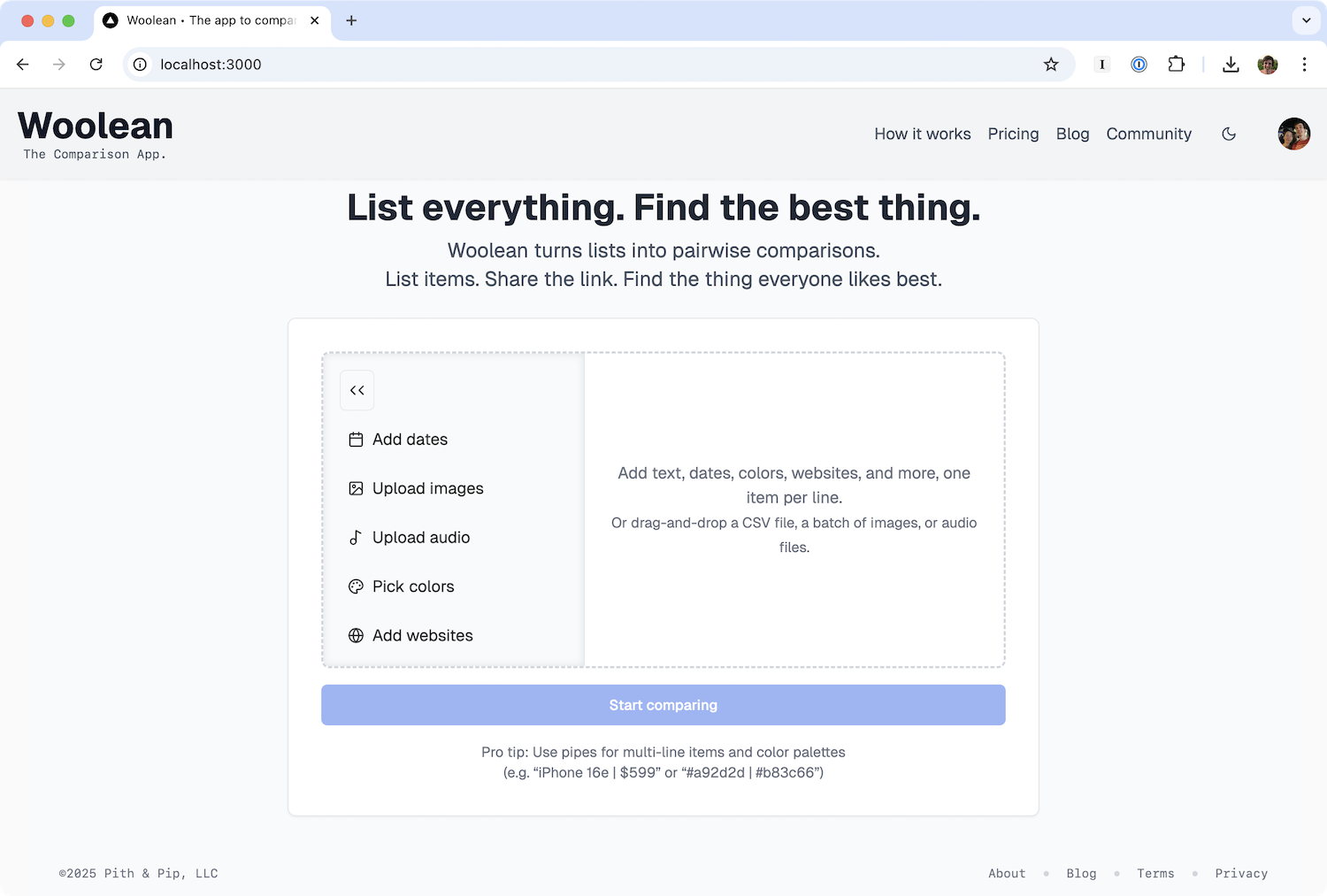
Everyone enjoys fewer lunch options
Welcome to Wolean: The app to compare things and find your favorite.
My wife and I used to constantly quibble about where to go for lunch. “I’m fine with whatever. You pick.” Then, some years back, we started using a system that has thus far been infallible. She picks three options, and I choose one of those.
Sometimes we flip who picks three and who makes the final decision. Sometimes we use it with our friends. It works for almost any two-person decision without serious consequences.
At first, I thought this was because my wife bleeds Type A (both literally and figuratively), while I’m a Type B, people-pleasing pushover. We both get to pretend that she’s doing all of the decision-making. But it works equally when both lunchgoers are apathetic (by distributing the responsibility and decision effort) or overzealous (by providing both participants with influence). No one has to do all the work, and everyone shares the blame when the choice ends up being the wrong one.
But for decisions when there’s a lot at stake–like which product photo to use or what to name your baby–the person assigned to turn a list of many into a list of three has too much sway. Pairwise ranking is, to me, the best alternative to the three-then-one decision tree, when trying to surface the most suitable item from a list.
Enough that we turned it into an app: Woolean.
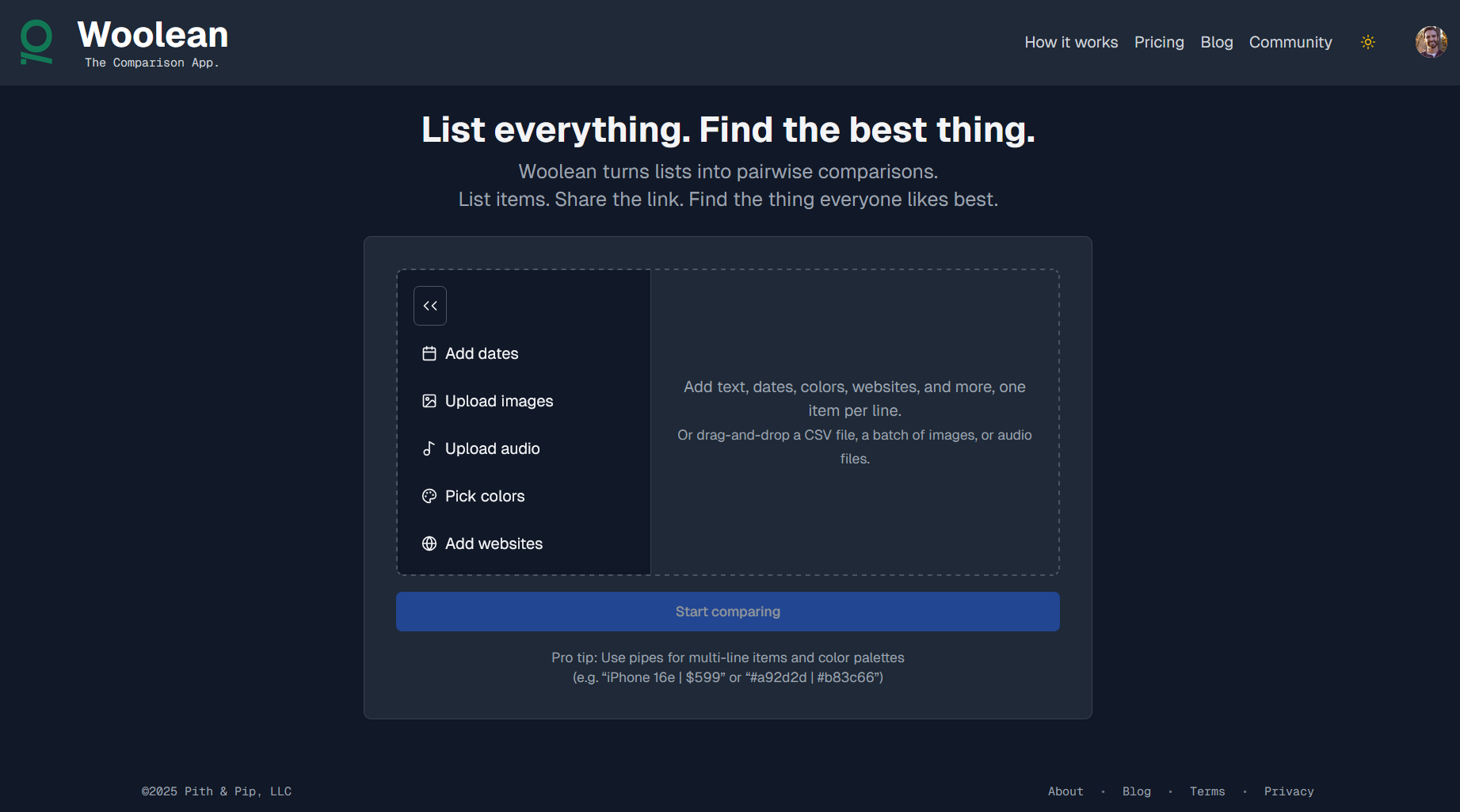
First, everyone agrees on a list of items to rank. Next, that list gets converted into a series of every possible one-on-one comparison, which works out to n*(n-1)/2. A 10-item list turns into 10*9/2, or 45 matchups.
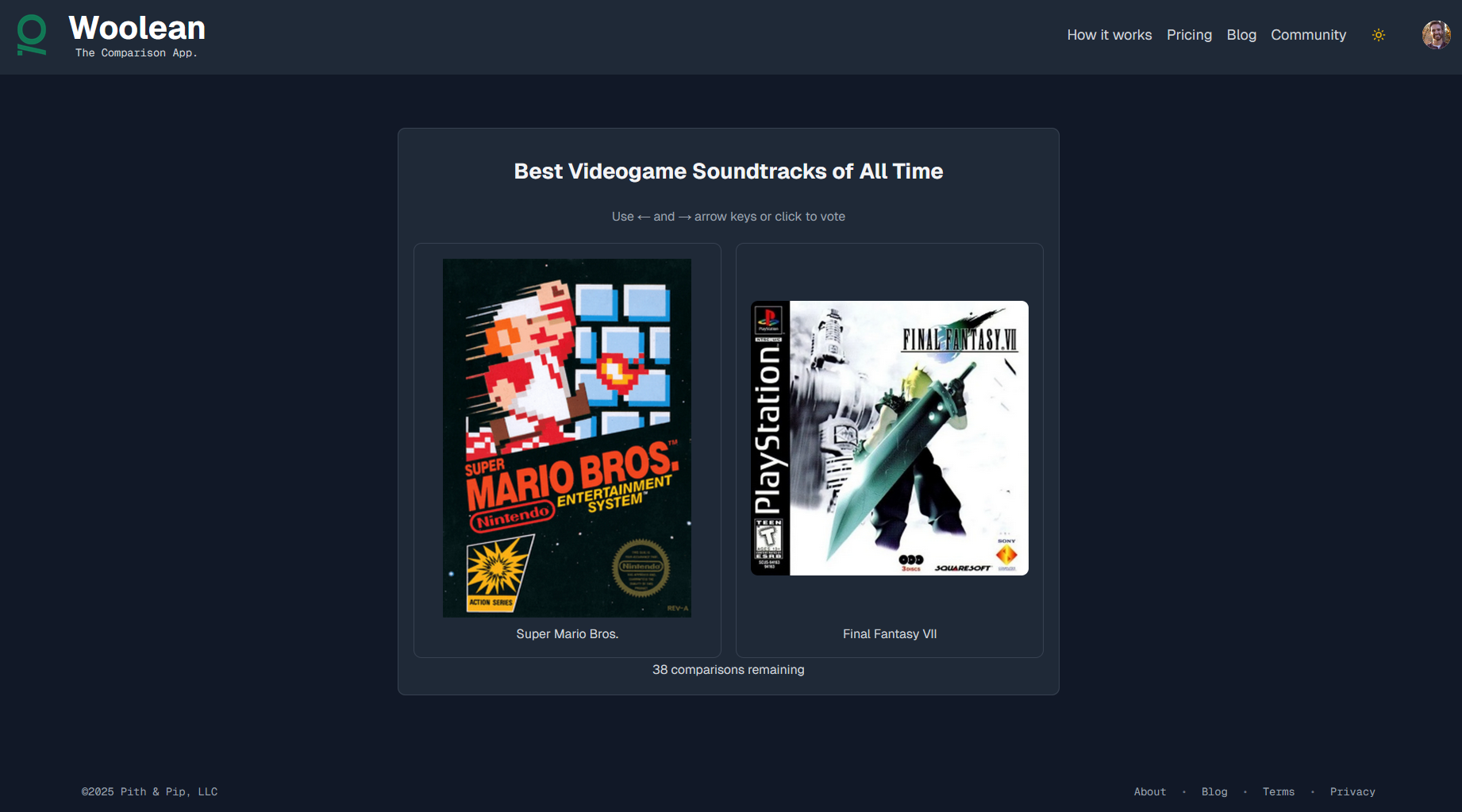
Then, like the person who picks a lunch spot from the list of three options, every individual in the group votes on every this-or-that comparison to quickly generate their own ranked list. Comparing two items at a time feels so much easier than having the whole list up on the screen, a cacophony of items, justifications, and relationships.

Every time someone picks one item over another, a point is assigned to the winning item. In a pairwise ranking of seven items, for example, an individual will vote for their number one choice seven times (higher if there were tie-breaking votes). In a group of five people voting on a seven-item list, the top pick would have anywhere from 20 to 30 votes, depending on how uniform everyone’s preferences were.
Pairwise comparisons work well with almost any item type–pictures, dates, audio files, whatever. A pairwise app, like Woolean, can handle lists with several dozen items, but things get pretty unwieldy once you cross the 15-item threshold (requiring 105 pairwise votes). What I find pairwise comparisons most useful for, though, are ranking either apples-and-oranges items or extremely homogenous lists.
The hardest lists to sort
On one end of the ranking spectrum are lists of qualitative items. My favorite example is a list of favorite authors. That’s an incredibly hard group to rank, even when you add a modifier to narrow the scope to a subgenre. You can’t compare Arthur C. Clarke to Robert Heinlein, they have totally different styles!
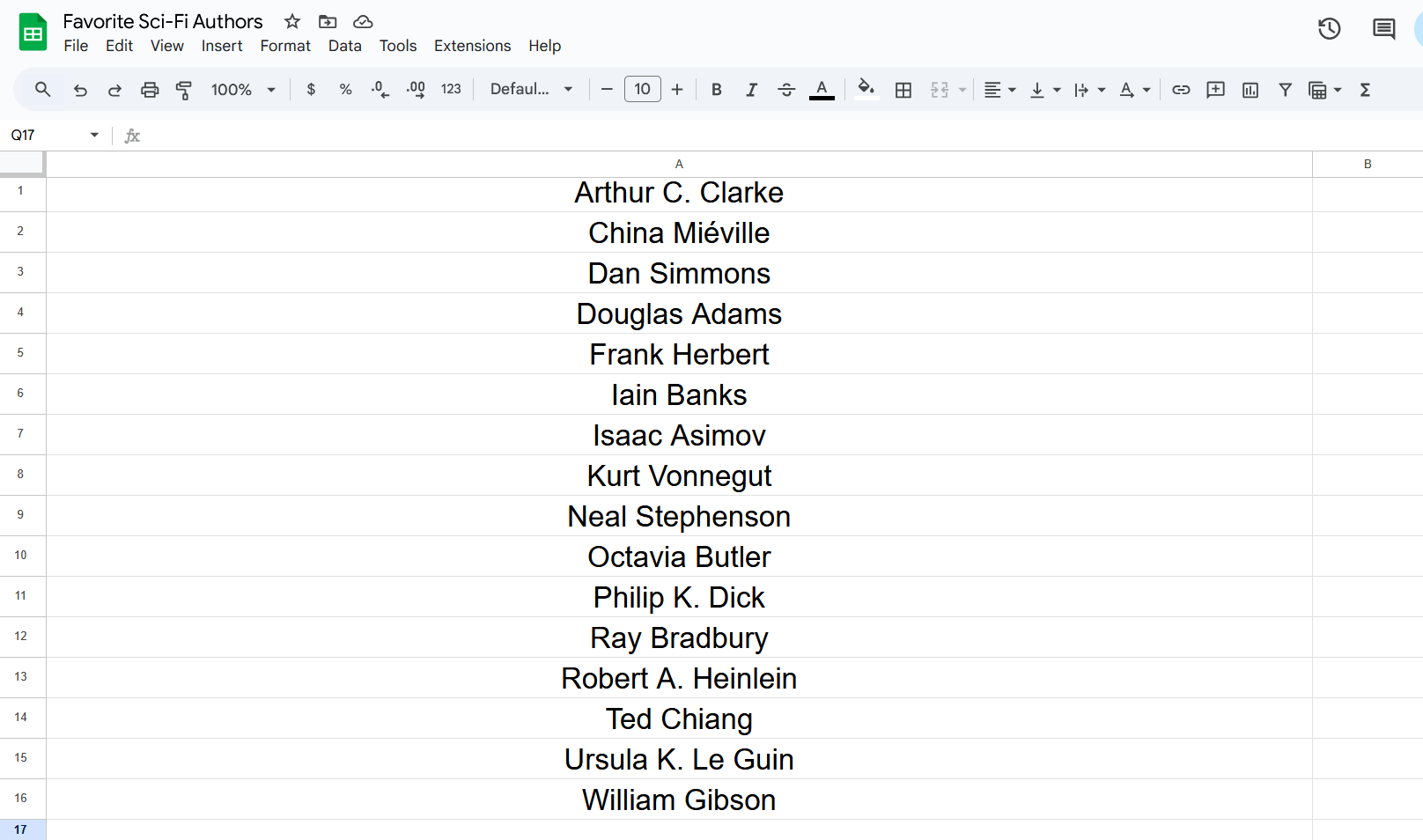
On top of the problem of assigning scores to intangible qualities, when you view the entire list at once you’re constantly running out of (mental) RAM. You ranked Le Guin over Gibson for one reason, but Gibson over Stephenson for another reason, and then realized that you actually like Stephenson more than Le Guin. It’s like trying to get a room full of cats to line up in order of complacency.
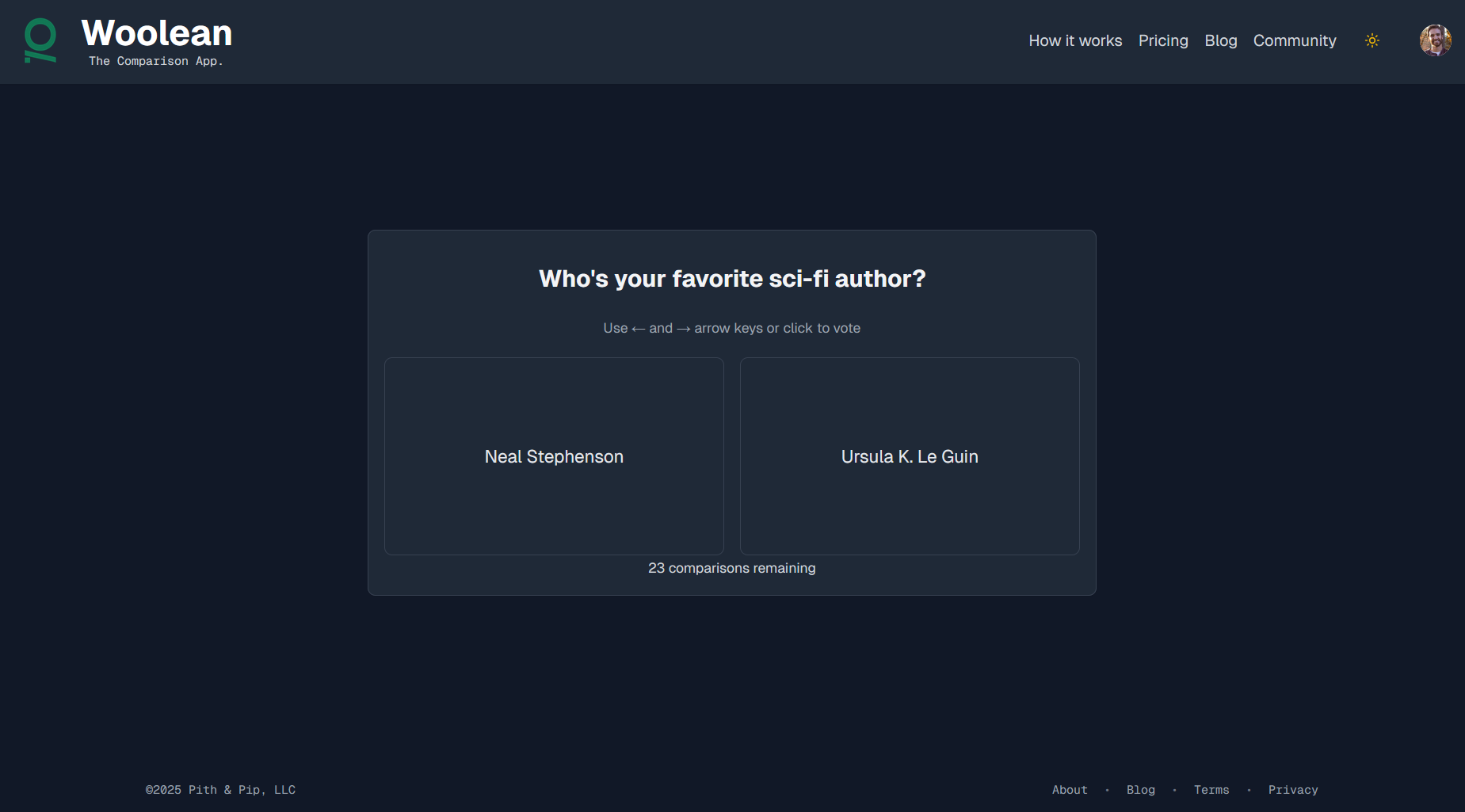
A pairwise comparison of creative works is like having a computer pick the list of three lunch options for you to choose from. You aren’t being asked to pick your GOAT author from a list of 15. You’re being asked which of these two do you prefer, right now. And, after that, which of another two. And so on.
It’s not perfect. Your answer might change every time you run the list through Woolean. But it’ll triangulate qualitative preferences and get you closer to consistency than any other approach that I’ve found.
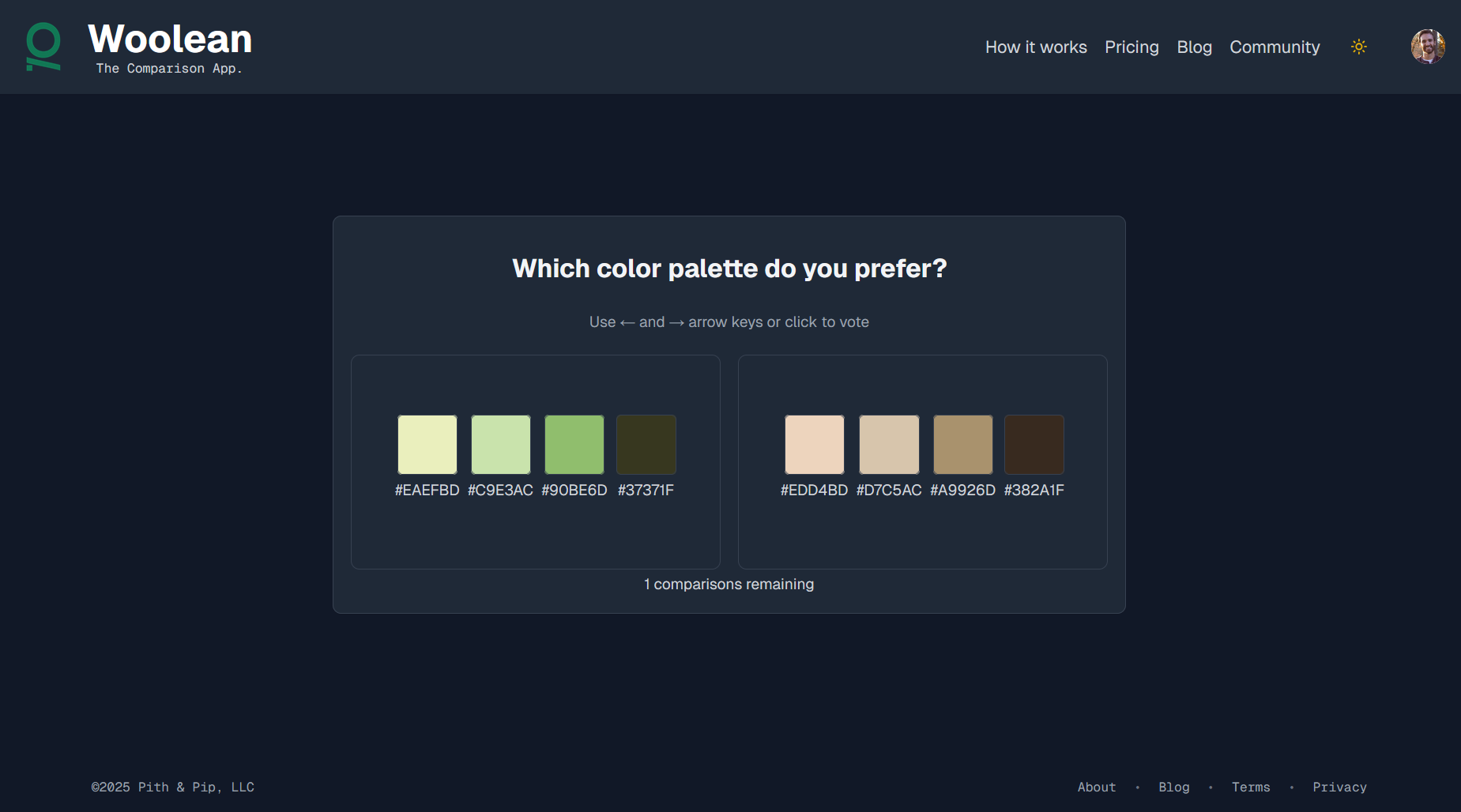
The complete opposite use case is a group of nearly indistinguishable items. Give someone a list of 10 slight variations on a single color palette, logo, or corporate headshot and you’ll generate more sleep data than design choices. Split the list up into a bunch of side-by-side face-offs and let folks vote with the arrow keys on their keyboard, though, and you can swap the two-hour design meeting for five minutes of button mashing.
With two similar visuals side by side, you have a chance to study the small differences, picking the one that is almost imperceptibly better, only noticeable because it’s been separated from the group. Or, trust your gut, making lightning-fast decisions without overthinking or overanalyzing.
In Woolean, you can always go back and review how you voted, if you’re logged in. The results page (currently) only shows vote totals, but you can see the winners of specific matchups by either exporting a CSV or emailing the results to a friend or colleague. And, if you’ve shared your comparison group with others (and created an account), your My Comparisons page will always show the most recent Global Vote tally.
If you’ve got a ranking that is especially fun or popular, email us and we’ll put it on the Community page.
This is not what you think it is
Long lists, short lists, interchangeable items, dissimilar items: Pairwise ranking works equally well across the board. We’ve seen it included as a feature in do-it-all form builders, monolithic project management apps, and enterprise product research tools. The last thing the internet needs is another ServiceNow. And we’re certainly not the right people to build one.
Woolean will always be a pairwise comparison app. All of the ideas we have for new features are strictly related to pairwise comparisons (you can actually vote on your favorite roadmap features, if you’d like). And most people will not need a paid tier for their pairwise comparisons.
Matt and I built Woolean because it worked for our own use cases (him for photography, me for newsletter subject lines). I bet it’ll work for yours too. Even if all you’re trying to do is get your spouse to pick a spot for lunch.
